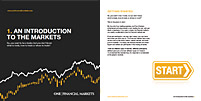

Stoxx 600 has 15% downside risk by Q1 2025 - Bank of America
Investing.com – European equities have fallen from recent highs over the last couple of weeks, and Bank of America Securities sees further downside for the region’s benchmark Stoxx 600 index into the first quarter of next year.
Europe's main stock index, the pan-European STOXX 600, soared to a record high in early May, as risk appetite was bolstered by growing bets on interest rate cuts in the region and a strong earnings season.
The Stoxx 600 index closed at 516.50 on May 30, below its 525.33 record high.
However, analysts at Bank of America Securities pointed out, in a note dated May 31, that equites have fallen back since mid-May, largely on the back of a significant rise in the U.S. 10-year real bond yield, the discount rate for global equities, as better-than-expected macro data has triggered concerns that an overheating economy might force central banks to tighten further.
Over the past 18 months, a sharp acceleration in global growth momentum - driven by the U.S., and, more specifically, by U.S. consumption - has liſted the global 12-month forward EPS to new record levels, while helping to compress the global equity risk premium to a 20-year low.
“If U.S. growth indeed now starts slowing in response to the lagged impact of higher rates and a fading fiscal boost, this would be consistent with higher risk premia and lower EPS expectations ahead,” the bank said.
This is BoA’s base case, with its analysts expecting the recent soſtening in U.S. growth momentum to intensify, consistent with the behavior of the economy at the late stage of an aggressive tightening cycle.
It remains negative on European equities, saying its “macro assumptions are consistent with nearly 15% further downside for the Stoxx 600 to 450 by Q1 next year - as well as nearly 15% downside for European cyclicals versus defensives.”
BoA acknowledges a key risk to its base case, a scenario in which fading inflation comes first, with the soſtening in growth momentum playing out more slowly, a positive for equities as it removes the higher-for-longer rates concerns.
“That said, both developments we expect - soſtening growth and fading inflation - are ultimately consistent with more dovish central banks and, hence, lower bond yields. This motivates our overweights in rates-sensitive assets, including growth versus value stocks, quality versus the market and bond-proxy sectors like luxury goods, soſtware, chemicals and real estate, while leaving us underweight financials,” BoA added.
Begin trading today! Create an account by completing our form
Privacy Notice
At One Financial Markets we are committed to safeguarding your privacy.
Please see our Privacy Policy for details about what information is collected from you and why it is collected. We do not sell your information or use it other than as described in the Policy.
Please note that it is in our legitimate business interest to send you certain marketing emails from time to time. However, if you would prefer not to receive these you can opt-out by ticking the box below.
Alternatively, you can use the unsubscribe link at the bottom of the Demo account confirmation email or any subsequent emails we send.
By completing the form and downloading the platform you agree with the use of your personal information as detailed in the Policy.






